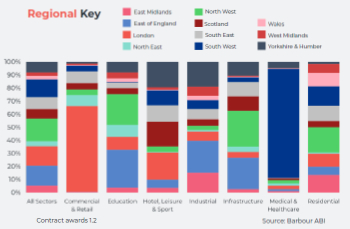Production information
The Construction Project Information Committee (CPIC) defines production information as '...the information prepared by designers, which is passed to a construction team to enable a project to be constructed'.
(Ref. CPIC The importance of production information - The Construction Project Information Committee provides best practice guidance on the preparation of production information.)
Production information is incorporated into tender documentation and then the contract documents.
The quality of production information is extremely important. Unless it is prepared and co-ordinated properly, there will be disputes and delays on site, and costs will be incurred.
Responsibility for production information depends on the selected system of procurement and the chosen form of contract.
On traditional contracts (and management contracts and construction management contracts), production information may be produced by the consultant team, on behalf of the client. Some elements of production information may be produced by specialist contractors, co-ordinated by the lead designer. Any gaps in this information that require specialist input after the tender process should be clearly defined showing abutment details to adjacent work faces and how such work is integrated into the overall scheme.
On other forms of contract (such as design and build or private finance initiative projects), responsibility for preparing production information and co-ordinating information prepared by specialist contractors may lie with the main contractor.
Production information may include:
- Drawings (location drawings, component drawings and dimensioned diagrams).
- Specifications, design criteria and calculations (specification information can be included on drawings or in a separate specification, but information should not be duplicated as this can become contradictory and may cause confusion).
- Bills of quantities or schedules of work (schedules of work are 'without quantities' instructional specifications often produced by designers on smaller projects for pricing, or for items such as builders work and fixing schedules, such as sanitary fittings, doors, windows, ironmongery, light fittings, louvers, roller shutters, diffusers, grilles and manholes).
There should be a particular emphasis on equipment with long manufacturing times, such as switchgear, chiller units, lifts, escalators or bespoke cladding systems, and on front-end construction such as service diversions, demolition, setting out details, underground drainage, piling and groundworks.
Definitions and rules relating to drawn information for 'with quantities' projects are described the New Rules of Measurement. See New Rules of Measurement for more information.
Increasingly, software is used to prepare elements of production information such as computer aided design (CAD) to prepare drawings, common data environments (CDE), and proprietary systems for the preparation of specifications.
The advent of building information modelling (BIM) can allow the automatic generation of all elements of production information from a single co-ordinated model, resulting in a reduction in errors and so costs.
[edit] Related articles on Designing Buildings
- Bills of quantities.
- Building information modelling.
- Common Arrangement of Work Sections (CAWS).
- Concept drawing.
- Construction drawing.
- Construction Project Information Committee.
- Elevations.
- New Rules of Measurement.
- Post-production information.
- Prescriptive specification.
- Procurement route.
- Production information report.
- Schedules of work.
- Shop drawings.
- Specifications.
- Standard Method of Measurement (SMM7).
- Work section.
- Working drawings.
[edit] External references
Featured articles and news
Spring Statement 2025 with reactions from industry
Confirming previously announced funding, and welfare changes amid adjusted growth forecast.
Scottish Government responds to Grenfell report
As fund for unsafe cladding assessments is launched.
CLC and BSR process map for HRB approvals
One of the initial outputs of their weekly BSR meetings.
Architects Academy at an insulation manufacturing facility
Programme of technical engagement for aspiring designers.
Building Safety Levy technical consultation response
Details of the planned levy now due in 2026.
Great British Energy install solar on school and NHS sites
200 schools and 200 NHS sites to get solar systems, as first project of the newly formed government initiative.
600 million for 60,000 more skilled construction workers
Announced by Treasury ahead of the Spring Statement.
The restoration of the novelist’s birthplace in Eastwood.
Life Critical Fire Safety External Wall System LCFS EWS
Breaking down what is meant by this now often used term.
PAC report on the Remediation of Dangerous Cladding
Recommendations on workforce, transparency, support, insurance, funding, fraud and mismanagement.
New towns, expanded settlements and housing delivery
Modular inquiry asks if new towns and expanded settlements are an effective means of delivering housing.
Building Engineering Business Survey Q1 2025
Survey shows growth remains flat as skill shortages and volatile pricing persist.
Construction contract awards remain buoyant
Infrastructure up but residential struggles.
Warm Homes Plan and existing energy bill support policies
Breaking down what existing policies are and what they do.
A dynamic brand built for impact stitched into BSRIA’s building fabric.





















